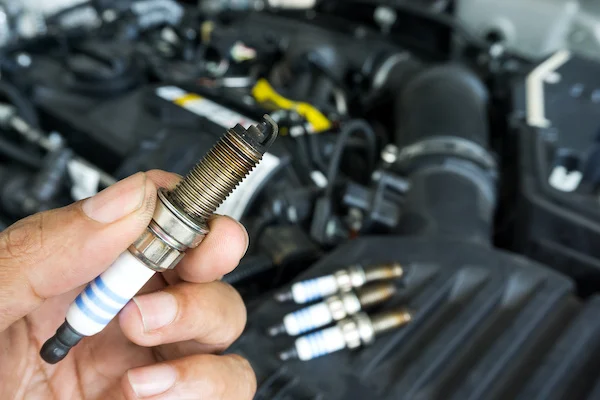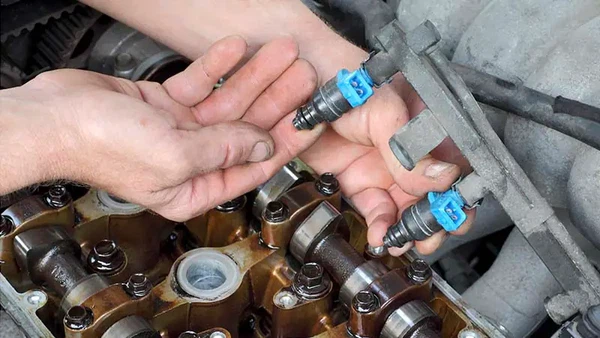If your engine feels rough, vibrates unusually, or your check engine light comes on, you might be dealing with an engine misfire. Misfires are common yet serious engine issues that can lead to poor performance, increased emissions, and even engine damage if ignored.
In this guide, we’ll break down everything you need to know about engine misfire issues, including causes, warning signs, diagnosis, and how to fix them.
🔧 What Is an Engine Misfire?
An engine misfire occurs when one or more of your engine’s cylinders fail to ignite the air-fuel mixture at the right time. This disrupts the combustion cycle and results in loss of power, uneven operation, or shaking.
Your engine is designed to fire in a precise order. When that pattern is interrupted—even briefly—it’s known as a misfire.
🚨 Symptoms of an Engine Misfire

Recognizing the signs of a misfire early can prevent serious damage. Common symptoms include:
- 🟠 Check engine light (often blinking)
- 🚙 Rough idling or shaking while driving
- 💨 Poor fuel economy
- ⚡ Loss of power or hesitation
- 🔊 Popping or backfiring sounds
- 🌫️ Increased exhaust emissions
- 🔥 Engine smells hot or unusual odors
Tip: A blinking check engine light usually indicates a severe misfire that may damage your catalytic converter. Don’t ignore it!
🔍 Common Causes of Engine Misfire
Misfires can stem from problems in the ignition system, fuel system, or engine internals. Here are the most common culprits:
1. Worn or Faulty Spark Plugs
Spark plugs create the spark that ignites the fuel. If they’re worn out or fouled, the cylinder won’t fire properly.
2. Bad Ignition Coils or Wires
Ignition coils send voltage to the spark plugs. A failing coil can cause misfiring, especially under load or acceleration.
3. Dirty or Clogged Fuel Injectors
Fuel injectors spray fuel into the combustion chamber. If they’re clogged, fuel delivery becomes inconsistent.
4. Vacuum Leaks
Unwanted air entering the engine can disrupt the air-fuel mixture, causing lean conditions and misfires.
5. Low Fuel Pressure
A failing fuel pump, clogged fuel filter, or bad pressure regulator can lead to inadequate fuel delivery.
6. Faulty Sensors
Sensors like the oxygen sensor, MAF sensor, or crankshaft position sensor may send incorrect data, affecting timing and combustion.
7. Mechanical Issues
Low compression due to worn piston rings, valves, or head gaskets can also cause persistent misfires.
🧪 How to Diagnose an Engine Misfire
Here’s how to find the root cause:
Step 1: Scan for Error Codes
Use an OBD2 scanner to retrieve diagnostic trouble codes (e.g., P0301–P0308 indicate misfires in specific cylinders).
Step 2: Inspect Spark Plugs & Coils
Look for damage, carbon buildup, or wear. Swap coils between cylinders to isolate faulty parts.
Step 3: Check Fuel System
Test fuel pressure and inspect fuel injectors for proper spray pattern.
Step 4: Look for Vacuum Leaks
Use a smoke test or spray carb cleaner around vacuum lines to find leaks.
Step 5: Compression Test
Perform a compression test to check for internal engine damage.
🛠️ How to Fix Engine Misfire Issues

Depending on the cause, here are the most common fixes:
| Cause | Solution |
| Worn spark plugs | Replace spark plugs |
| Bad ignition coils | Replace faulty coil(s) |
| Dirty fuel injectors | Clean or replace injectors |
| Vacuum leak | Repair or replace damaged hoses |
| Low fuel pressure | Replace fuel pump or filter |
| Faulty sensors | Replace or recalibrate sensors |
| Engine mechanical issue | Repair internal components |
Pro Tip: Always replace spark plugs and coils as a set for balanced performance.
📅 How to Prevent Engine Misfires
Prevention is better than repair. Follow these maintenance tips:
- 🔄 Replace spark plugs every 30,000–100,000 miles (depending on type)
- ⛽ Use high-quality fuel and fuel system cleaners
- 🔍 Inspect ignition coils and wires regularly
- 🌬️ Clean the throttle body and intake regularly
- 🔧 Address any check engine lights promptly
- 🛢️ Keep up with oil and air filter changes
❄️ Cold Weather and Engine Misfires
Cold starts can cause temporary misfires due to thickened oil or poor fuel vaporization. If your car misfires only during startup, it could be:
- Weak battery or poor spark
- Cold fuel delivery issues
- Sensor malfunction (e.g., coolant temp sensor)
Warm up the engine gently and consider using synthetic oil in winter.
FAQs About Engine Misfires
Q1: Is it safe to drive with an engine misfire?
No. A misfire can damage the catalytic converter and engine over time. It’s best to diagnose and repair the issue immediately.
Q2: Can a misfire fix itself?
Sometimes a minor misfire may resolve, especially due to temporary moisture or bad fuel. However, persistent misfires need repair.
Q3: Can bad fuel cause a misfire?
Yes. Contaminated or low-octane fuel can lead to incomplete combustion and misfires.
Q4: What does a P0300 code mean?
P0300 means random or multiple misfires, often caused by ignition or fuel issues affecting more than one cylinder.
Q5: How much does it cost to fix a misfire?
Costs vary. A spark plug replacement might cost $50–$200, while major engine repairs can run over $1,000.
Q6: Will changing spark plugs stop misfires?
If spark plugs are the cause, yes. However, other components like coils or injectors may also be involved.
Q7: How long can I ignore a misfire?
You shouldn’t. Misfires should be addressed immediately to avoid expensive damage.
Q8: Can a misfire cause stalling?
Yes. Severe or multiple misfires can cause the engine to stall, especially at idle or low RPMs.
Conclusion: Don’t Ignore Engine Misfires
An engine misfire might seem minor, but it’s a red flag that something isn’t right. Whether it’s a bad spark plug, fuel issue, or a deeper mechanical problem, catching and fixing it early can save you from expensive repairs. Keep your engine running smoothly by staying on top of maintenance and addressing misfires promptly.




